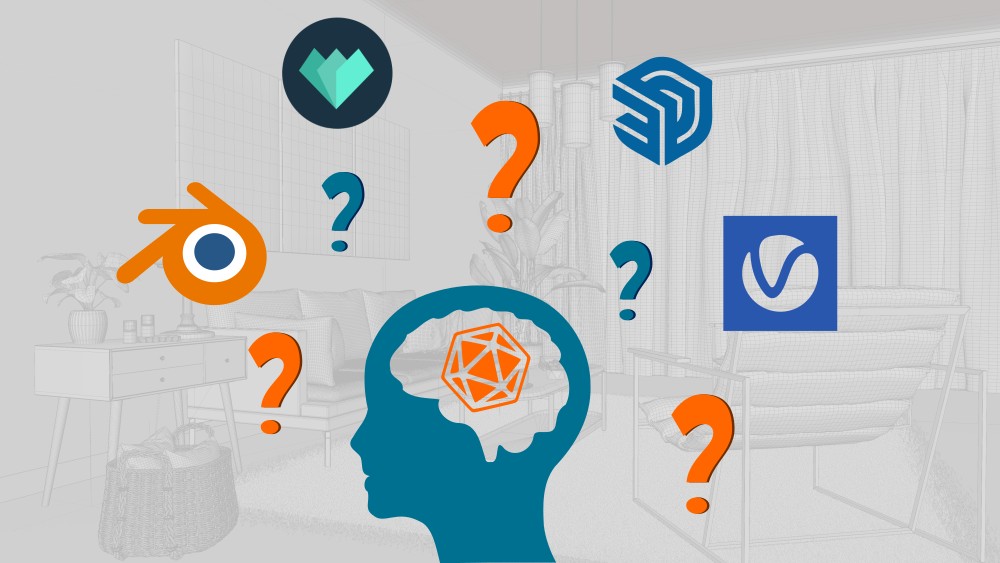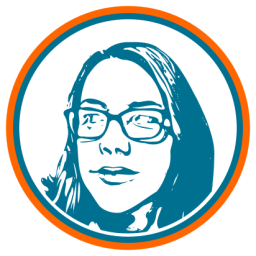

Before moving on to the 3D modeling of the scenes, I would like to explain the process we have followed for choosing the design software we will use for our scenes.
In the interior design and architecture industry, the changes in 3D design and rendering software have been very rapid and as a result, over the years I have adapted to many different programs as they evolved.
In my early days in the world of 3D modeling, I used Autocad and using the 3D view, I made my first three-dimensional models.
A few years later, the design program Sketchup became popular for modeling spaces. It made modeling much easier, but it did not have a photorealistic rendering system, so I had to rely on an independent rendering engine called Artlantis to generate images for projects.
Although the result was quite good, that way of working was very uncomfortable, as when I was working with Artlantis and there was a need to make a modification related to the modeling, I had to go back to the Sketchup model, modify it, and export it to Artlantis again. It was a cumbersome process not being able to make modifications directly in a single program.
The next combination of programs I used completely eliminated that problem. I continued to use Sketchup for modeling, but used the software Vray for rendering. Vray is integrated into Sketchup as if it were just another toolbar, so any modification can be made directly in Sketchup and it is faster and more comfortable than working with two separate programs. In addition, Vray has a series of tools that make it much easier to achieve realistic finishes.
After years of trying different programs, I tried Blender. A program that I had a love-hate relationship with for many years because it was not at all like the more commercial programs. I was very interested in learning to use it, but no matter how hard I tried, I found it uncomfortable and complicated because the way of working was nothing like the programs I was used to.
4 years ago, by chance, I found the Koré formation course "Blender for the virtual 3D reconstruction of heritage" and I decided that it was the perfect excuse to learn how to use Blender. That radically changed my way of working and my "relationship" with the program. I liked what I learned so much that I also took the course "3D Recreation of historic cities", and that knowledge has been very useful for what I will have to do with this project.
Now I am very comfortable working with Blender and with practice, I have acquired a certain skill and speed. Taking into account my experience with previous programs, using Blender is the most appropriate decision, because we believe it is one of the best 3D design programs available on the market with many other extra advantages:
- Active community and support: Blender has an active global community of users and developers who are constantly collaborating and sharing knowledge. This support network offers a wealth of resources, tutorials, and add-ons that can help improve my skills and overcome almost any obstacle I may encounter in the design process.
- Flexibility and versatility: Blender is an extremely versatile tool that can be used for a wide range of purposes: from 3D modeling and animation to rendering and composition (even as a video editor). This versatility allows working on all aspects of game environment creation within a single cohesive platform, saving time and improving work efficiency.
- Continuous updates and improvements: As open-source software, Blender is constantly evolving thanks to the contributions of its developer community. This means that there are always new updates, features, and improvements available regularly, ensuring that the tool is always up to date and at the forefront of technology.
- Emphasis on innovation and experimentation: Being part of a free software community, Blender encourages innovation and experimentation. This means access to tools and techniques that may not be available in other commercial programs, allowing us to explore new ideas and approaches in game environment design.
- Add-ons: There is a wide variety of add-ons that can be integrated into Blender to further enhance its functionality. From specialized modeling tools to impressive visual effects, add-ons expand Blender's capabilities and allow for specific tasks to be carried out more efficiently and creatively.
- Creative freedom without monetary limitations: Blender is completely free. This means that we will be able to access all its powerful features without having to worry about expensive license fees. Considering this is our first project as a studio and funding is very limited for now, this saving is very significant.
The next step will be to start with the 3D modeling of the scene. I am looking forward to starting the process and shaping the world where our adventure will take place. I will continue to share more updates on our progress in the next development diaries.
Other interesting posts
Do not miss anything
If you want more information and to stay informed about our progress, we recommend that you subscribe to our newsletter, visit our website, join our discord and follow us on our social media channels.







